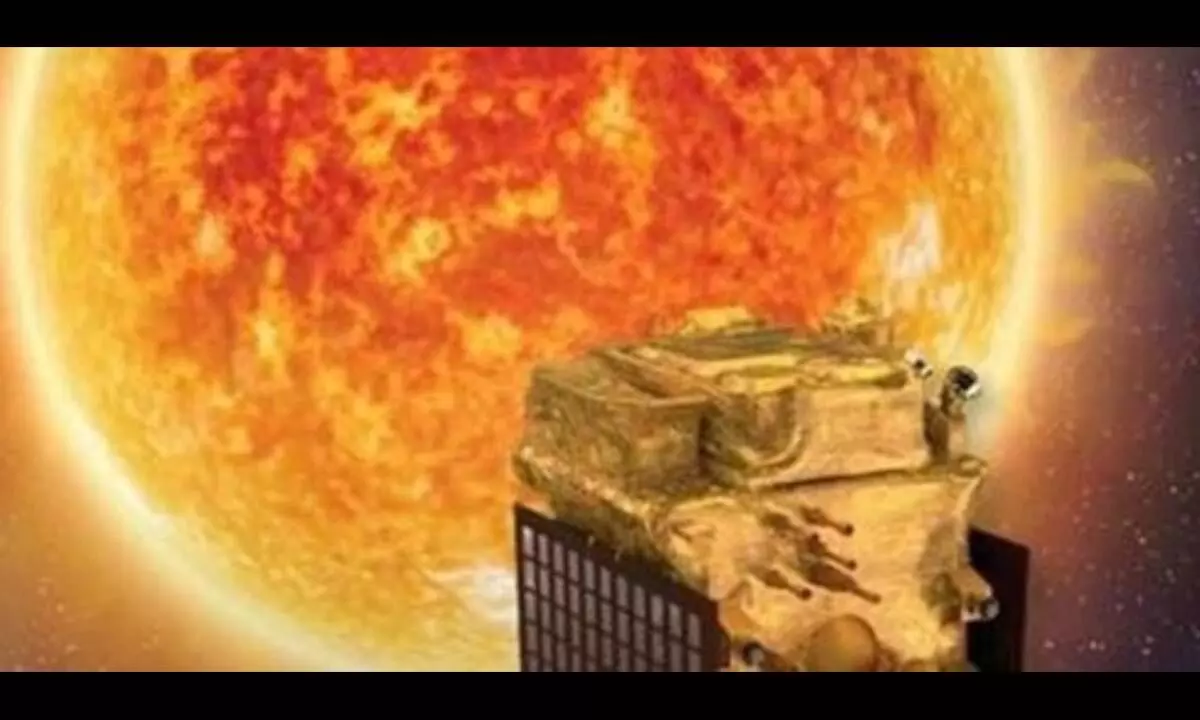Countdown for Aditya L-1 Sun mission begins
On Saturday, the rocket will blast off at 11.50 a.m. from the Sriharikota rocket port in Andhra Pradesh
image for illustrative purpose

Chennai The countdown for the Saturday morning launch of India’s third interplanetary mission -- this time to the Sun - Aditya-L1 -- will begin at 12.20 p.m. on Friday, said a senior official of Indian Space Research Organisation (ISRO).
“The countdown will begin at 12.20 p.m. today (Friday),” the official told.
Interestingly, India on August 23 reached the Moon with its lander safely landing on the lunar soil in a textbook style. Later the rover rolled down and started doing experiments.
The Aditya-L1 -- named after the Sun God in Hindu mythology -- will be carried by the Indian rocket Polar Satellite Launch Vehicle-XL variant (PSLV-XL). On Saturday, the rocket will blast off at 11.50 a.m. from the Sriharikota rocket port in Andhra Pradesh, the ISRO said.
During the countdown process, the fuelling of the rocket -- liquid fuel -- will be done as well as checking of its systems.
Initially, Aditya-L1 will be ejected in a low earth orbit (LEO). Then the orbit will be elliptical. As the spacecraft travels towards L1, it will exit the earth’s gravitational Sphere of Influence (SOI).
After exit from SOI, the cruise phase will start and subsequently the spacecraft will be injected into a large halo orbit around the Lagrange Point (L1) -- the point where the gravitational pull of two large bodies will be equal and hence the spacecraft will not gravitate towards any one of the planet.
The total travel time from launch to L1 would take about four months for Aditya-L1 and the distance will be about 1.5 million km from the Earth.
The distance between the Earth and the Moon is about 3,84,000 km.
"A satellite placed in the halo orbit around the L1 point has the major advantage of continuously viewing the Sun without any occultation/eclipses.
This will provide a greater advantage of observing the solar activities and its effect on space weather in real time,” the ISRO said.
According to the ISRO, the spacecraft carries seven payloads to observe the photosphere, chromosphere, and the outermost layers of the Sun (the corona) using electromagnetic and particle and magnetic field detectors.
"Using the special vantage point L1, four payloads directly view the Sun and the remaining three payloads carry out in-situ studies of particles and fields at the Lagrange point L1, thus providing important scientific studies of the propagatory effect of solar dynamics in the interplanetary medium," it said. Aditya-L1’s seven payloads are expected to provide the most crucial information to understand the problem of coronal heating, coronal mass ejection, pre-flare and flare activities and their characteristics, dynamics of space weather, propagation of particle and fields and others, the Indian space agency said.

